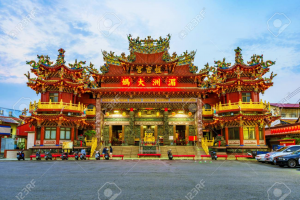History
1.As we know from class, Qing dynasty China in 1860 had just suffered its second overwhelming defeat from western expansionists during the opium wars.
2.This causes China to realize that it must open up to foreign influences and modernize, this was called the “Self-Strengthening Movement” and its motto was “Foreign learning for use, Chinese learning for essence”
3.The Japanese during this same time learned from Chinese defeats and began to fully adopt foreign ideals and modernized as well.
4. Where china only adopted Western influences superficially Japan totally reconstructed itself around them
5.Since the Japanese had a foreign and expansionist mind set, in 1894 it went to war with china for Korean influence in what is known as the first Sino Japanese war commonly known in China as the Jiawu War
6. At the end of the war Japan defeated China and as a result was given Taiwan when the treaty of Shimonoseki was signed.
Before 1945, only Japanese citizens had the privilege to submit planning applications and design buildings.
- During the Meiji Restoration era, many scholars, architects and politicians were sent abroad to study western advances in technology in europe and north america.
- Western classical style in Taiwan’s buildings, for example the current office of the President, the Taipei guest house and the national Taiwan museum.
- After Japan occupied Taiwan, the realm of the built environment was turned on its head. Many cities and towns were altered. Buildings were turned modern.
- Baroque architecture and relief sculptures are typical Japanese architecture styles.
- After Japan had to leave Taiwan (after WW2), old buildings were used for new purposes
- Example: The old city government building was turned to the National Museum of Taiwan literature
Architecture
Since Taiwan was Japan’s first ever colony, the Japanese immediately got to work putting great effort in to turning Taiwan in the perfect model for how a colony should look.
This is why there is a lot of architecture in Taiwan that has Japanese influences although today Taiwan is a province of China.
Temples
The first temple is Chinese-inspired, the second is Japanese-inspired. Both can be found in Taiwan. There are similarities because before the period of modernization, Japan got a lot of its architecture techniques and influences from China.
Some differences you will notice immediately is that the Chinese temple is more extravagant. It has a multitude of decorations on the roofs which signals that this structure is a temple. The paint colors symbolize joy, good fortune and prosperity.
The lack of decorations and paint on the Japanese architecture mainly stems from the belief in Shintoism.
A quick description of Shintoism is that there is a sacred essence (god/ divinity) in all things. This sacred essence manifests in multiple forms such as rocks, trees, rivers, animals, places and people.
So, with Japanese architecture, the natural materials used to build the structures such as wood, and stone are very commonly left in their natural color.
Some similarities in the architecture are sloped-up roofs and the symmetry, both similarities that influence the architecture stem from the same origins. The symmetry reflects the principle of balance and harmony from the Taoist philosophy of feng shui and the sloped-up roofs come from the belief that it wards off evil spirits.
Gates
Gates have similar qualities to temples. An important fact about Torii gates, which were the entrances of Shinto shrines, is that they were originally built light and small because Shinto shrines for a long time used to be mobile, people would take them apart and move them around Japan.
Public Buildings
Aside from architectural techniques with traditional Japanese origins Japan created a lot of architecture with Traditional European influences.
This is because Japan was going through a period of Westernization.
An example of a structure with Japanese and European influences in Taiwan is the Office of the President
- It was created out of stone and has a grand marble staircase at its west gate entrance
- The Presidential office has Ionic and Corinthian pillars which embody the art of classical Greek and roman Architecture.
- A traditional Japanese influence that can be seen in the Office of the President and many other Japanese occupation era buildings in Taiwan is the tendency for buildings to face east towards the rising sun.







